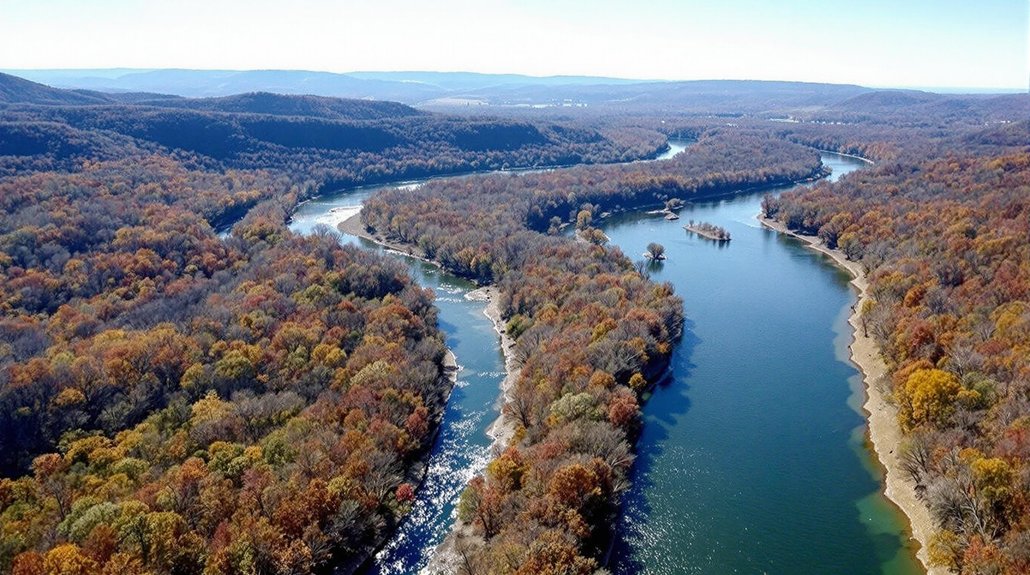The federal government has stopped a major $3.1 billion hydropower project in Oklahoma. Regulators cited the Southeast Oklahoma Power Corporation‘s failure to provide proper documentation and engage with stakeholders. The Federal Energy Regulatory Commission found serious issues with environmental impact assessments. The Choctaw Nation strongly opposed the project, which threatened numerous historic sites. This decision reflects growing scrutiny of large hydropower developments and raises questions about what other major infrastructure projects might face similar regulatory challenges.
Federal regulators have shut down a controversial hydropower project planned for the Kiamichi River in southeast Oklahoma after numerous violations of required procedures. The Federal Energy Regulatory Commission (FERC) halted the Southeast Oklahoma hydropower project because its developer, Southeast Oklahoma Power Corporation (SEOPC), failed to meet basic requirements in the federal licensing process.
The $3.1 billion project in Pushmataha County near Talihina was designed as a pumped-storage facility that would have created two reservoirs at different elevations. It would’ve functioned like a giant battery for the electric grid, moving water between reservoirs to store and generate electricity based on demand. FERC cited SEOPC’s lack of diligence throughout the application process.
This innovative $3.1 billion pumped-storage system would have acted as a massive battery, shuttling water between reservoirs to meet fluctuating electricity demands.
Despite multiple chances to improve compliance, SEOPC didn’t complete required study plans addressing environmental impacts and stakeholder concerns. The company’s incomplete documentation raised serious questions about the project’s effects on the local ecosystem, particularly endangered species in the Kiamichi River.
The project faced strong opposition from the Choctaw Nation and other Tribes whose lands would be affected. FERC policy prevents issuing permits opposed by impacted Tribes, and the project also conflicted with an existing Water Settlement Agreement that’s enforceable under federal law.
Federal officials found that SEOPC hadn’t adequately consulted with Tribal governments and other stakeholders. The proposed development threatened 36 historic archaeological sites, including 14 Choctaw cemeteries of cultural significance. Required cultural and historical site assessments were insufficiently addressed in the company’s planning documents.
Local residents, environmental organizations, and municipal officials also voiced concerns about water use, land rights, potential flooding, and disruption to local economies. The dam would have had a 50-100 year lifespan while permanently altering the valley’s ecosystem. Public input wasn’t properly incorporated into the project documentation.
FERC’s decision comes amid broader scrutiny of hydropower projects nationwide. The agency has recently strengthened enforcement of environmental regulations and stakeholder-engagement requirements. The Oklahoma project’s failure highlights the growing expectation that developers must thoroughly address environmental and community concerns before major infrastructure projects can move forward.







